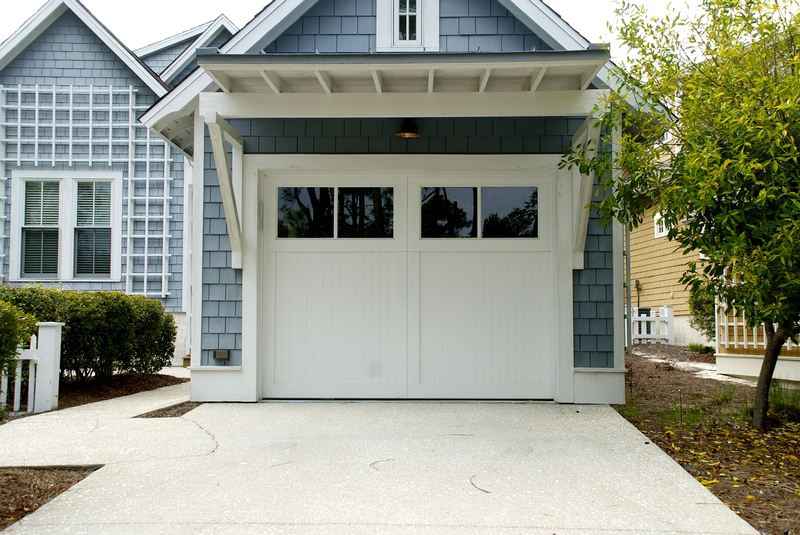You’re on the market for a new garage door: How do you pick out which one is best?
You’ll have to factor in a few important details such as design, functionality, price, warranty and possible maintenance/repairs.

We’ll show you the most important aspects and guide you through the buying process to help you make a good decision.
The garage door is the most common entranceway into the household and it has to be quality because you’ll be using it dozens of times a day. Here are the most important things to look out for:
Read Also:
The design has to match the general appearance of the house. You don’t have to buy the first white garage door that has a bunch of squares on it.
Buyers have flexibility in terms of colors although manufacturers tend to offer similar two or three color options across the board. It’s also possible to choose baked-on colors and sprayed colors.
Custom-made doors can increase the price by a significant margin. If you like the color and how it could potentially fit your garage, this is the most important step. You then have to hire professionals to install a garage door.
Most garage doors are built using materials such as steel, copper, wood, glass, aluminum, and fiberglass. You’ll find the most common design types are ribbed or embossed designs.
Most manufacturers will have a choice in materials beyond what’s shown in the showroom, so make sure to ask. There are manufacturers who will customize the door for you based on your taste, but they charge more for the service.
There are even subtle differences in terms of popular designs. These can increase the price accordingly. Example: Standard 24-gauge steel is popular.
However, hi-tensile steel is better at protecting the steel from damaging and denting. There are also differences when it comes to painting.
Baked-on colors tend to be more expensive than sprayed colors. These things give you a general idea as to the quality material and how this will reflect in the price.
The opener is the mechanical bit of the door and it’s usually available with a belt or a chain drive. The power is not an issue here, but rather the safety and noise-reduction features.
The standards changed a lot since we dumped manual garage doors, and new safety standards were introduced in the 90s which mandate that a door most reverse its direction if something crosses the path of the photoelectric eyes crossing the opening which is a major safety feature.
Unfortunately, most new door openers tend to be loud too. If you have a bedroom above the garage this can be a problem.
To know how much noise the door makes, ask for a demo at the retailer to know it doesn’t vibrate heavily and that noise is minimal.
Garage doors like all other doors and windows need to be insulated. The garage is not heated which means it’s the gateway between a cold part of the house and the warm part.
To get a door with a high insulation value you can ask the retailer to add polystyrene foam insulation.
This is an affordable upgrade that keeps the garage temperatures from entering the main home and making it more comfortable for you on the inside. Insulated doors tend to be quieter as well, due to the absorption of sound waves.
The hardware is detrimental to the lifespan of the garage door. Are you buying a door that will last you 5 years or 20 years? The coating should be the main clue you have, and you need to have a G-60 coating at least.
For people who live in cold and windy states, it’s necessary to re-enforce the door for wind protection. The door has to meet municipal building codes for wind resistance.
The oldest garage doors can handle winds up to 35 MPH while newer ones should guarantee the resistance of up to 70 MPH.
The manufacturer should provide you with a warranty on parts and service. The most common warranty is for 1 year and this includes replacement parts.
Certain companies offer 10, 20 or 30-year warranties and the best companies will even offer you a lifetime warranty.
You should spend the $100-200 extra for a door that gives you an additional warranty because you’ll eventually have to replace or repair the door, which means you should go with the one that gives you the longest warranty.